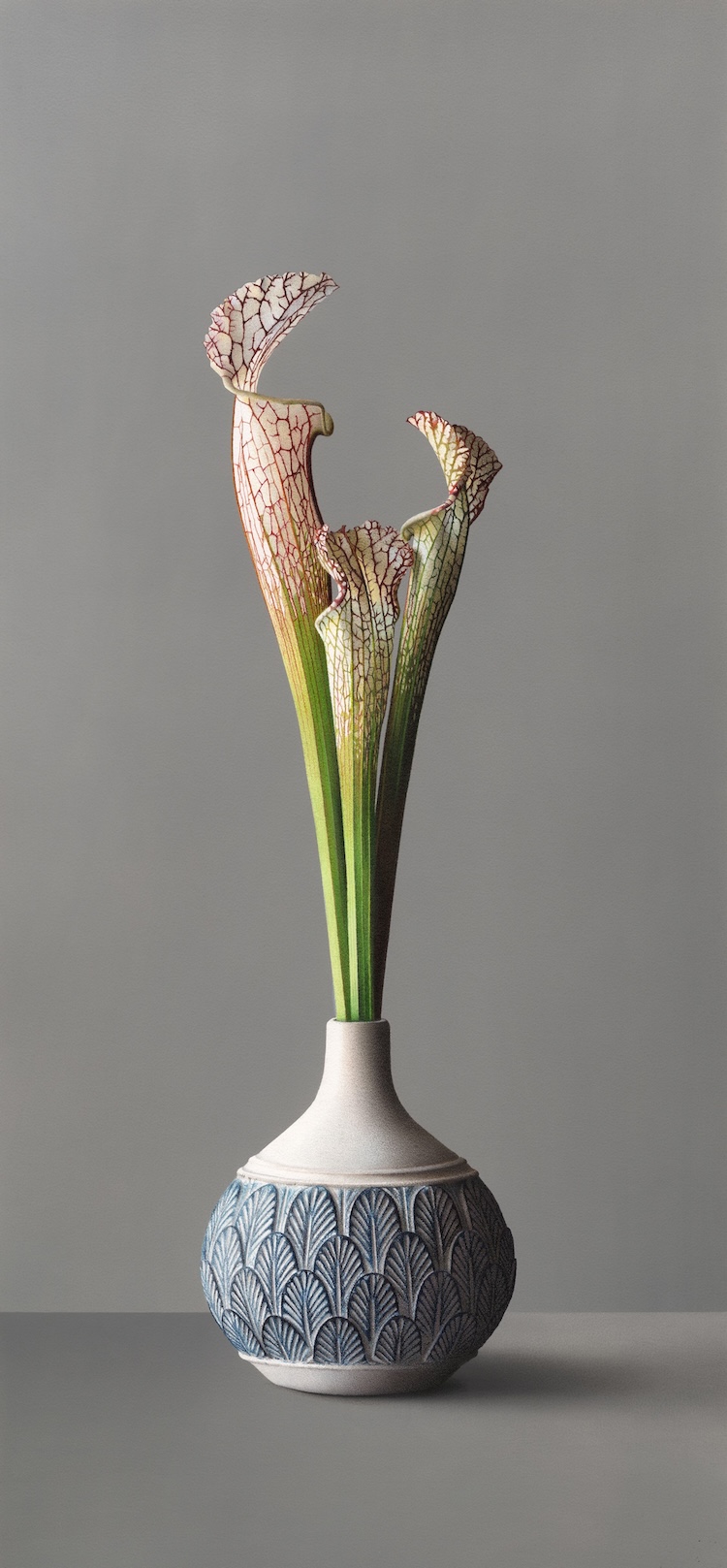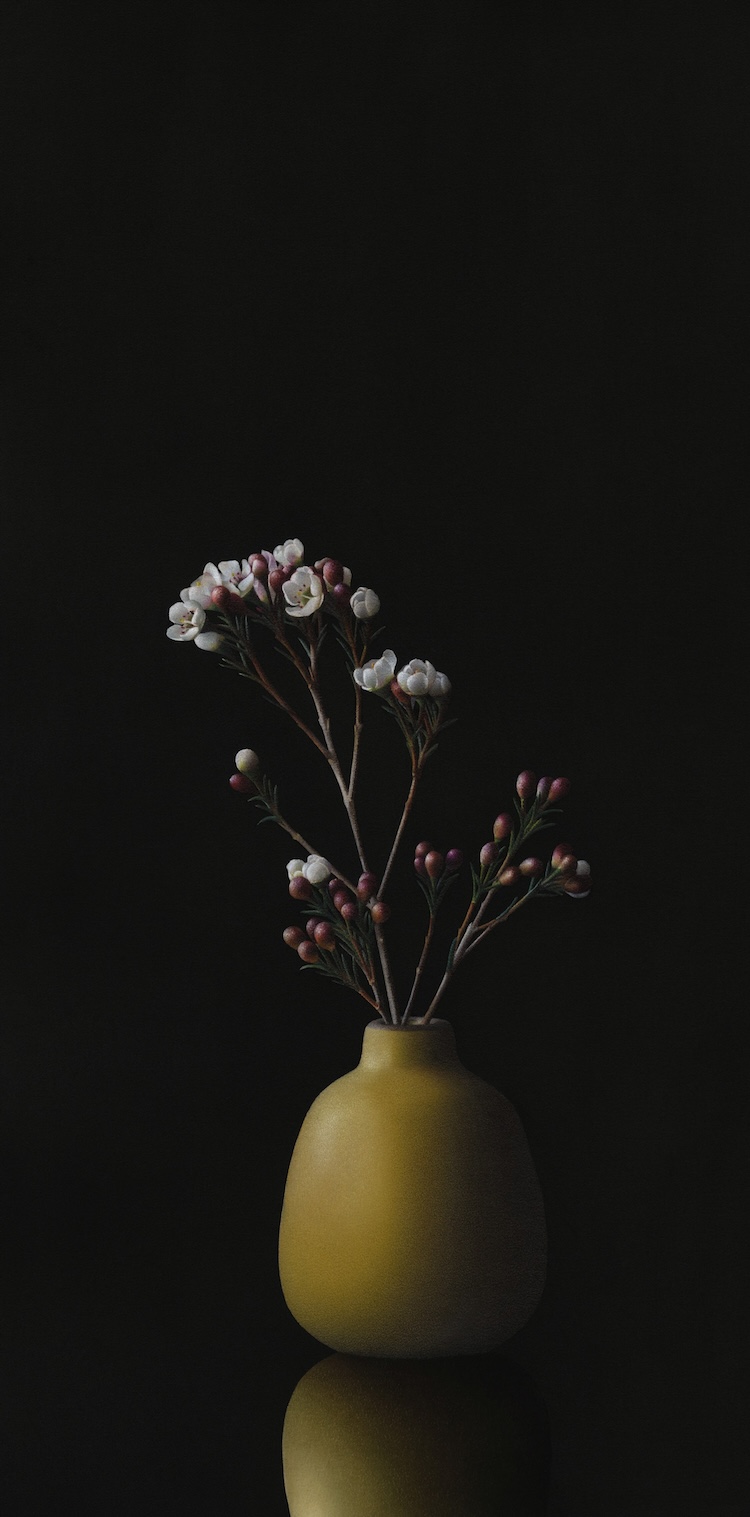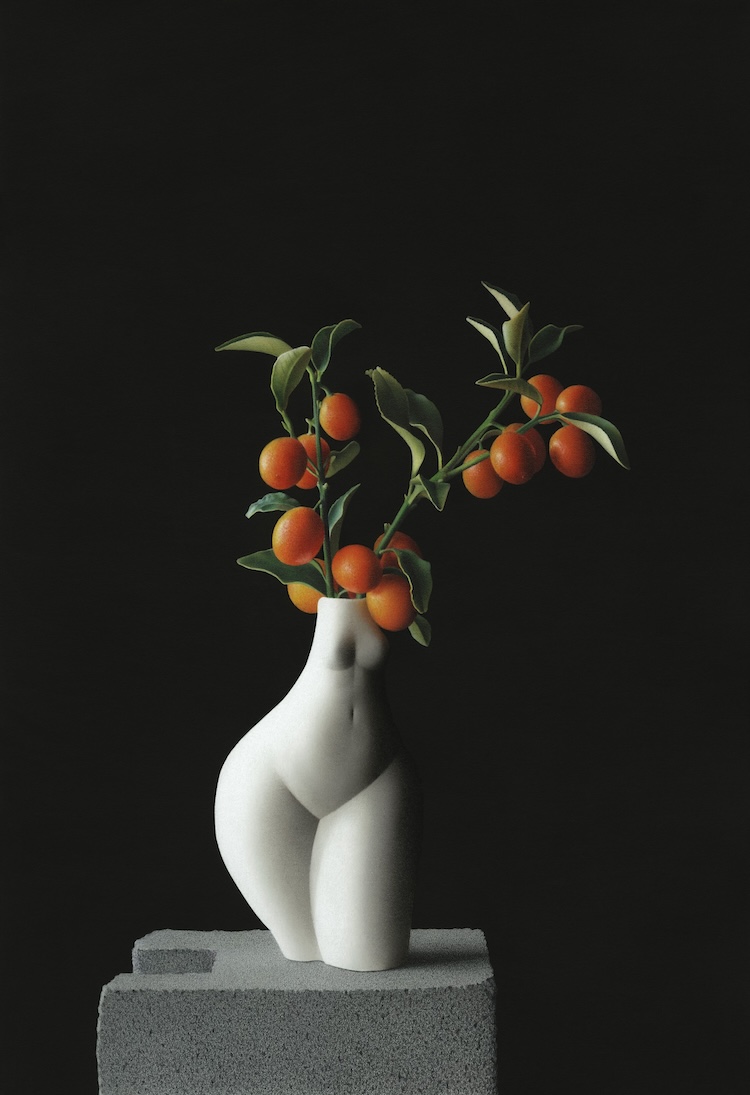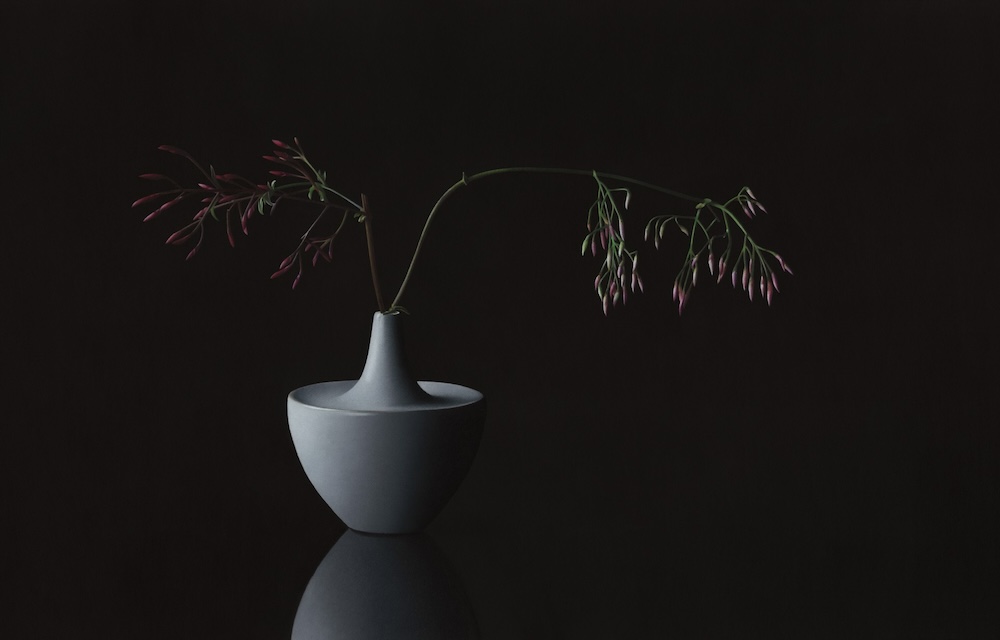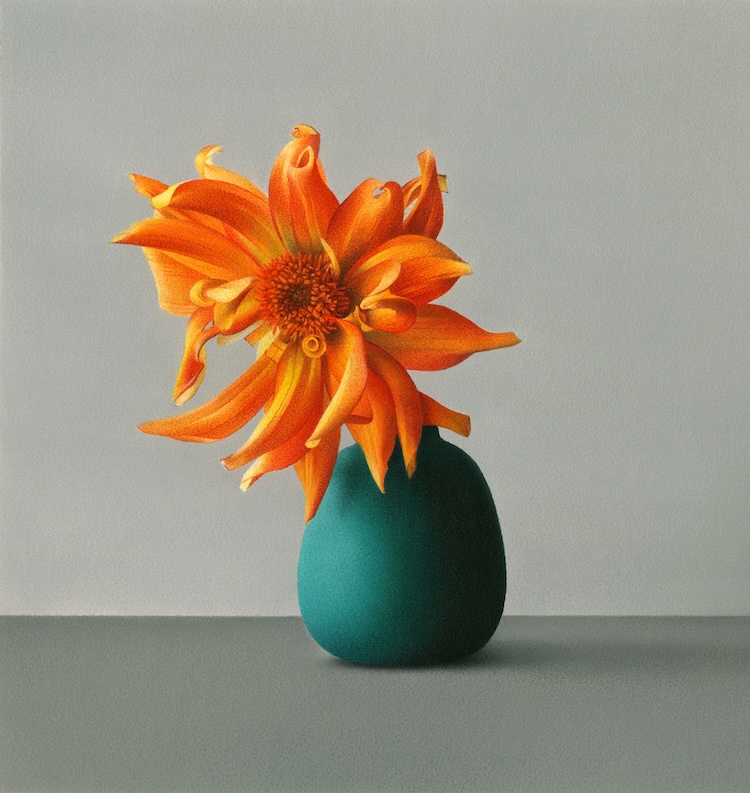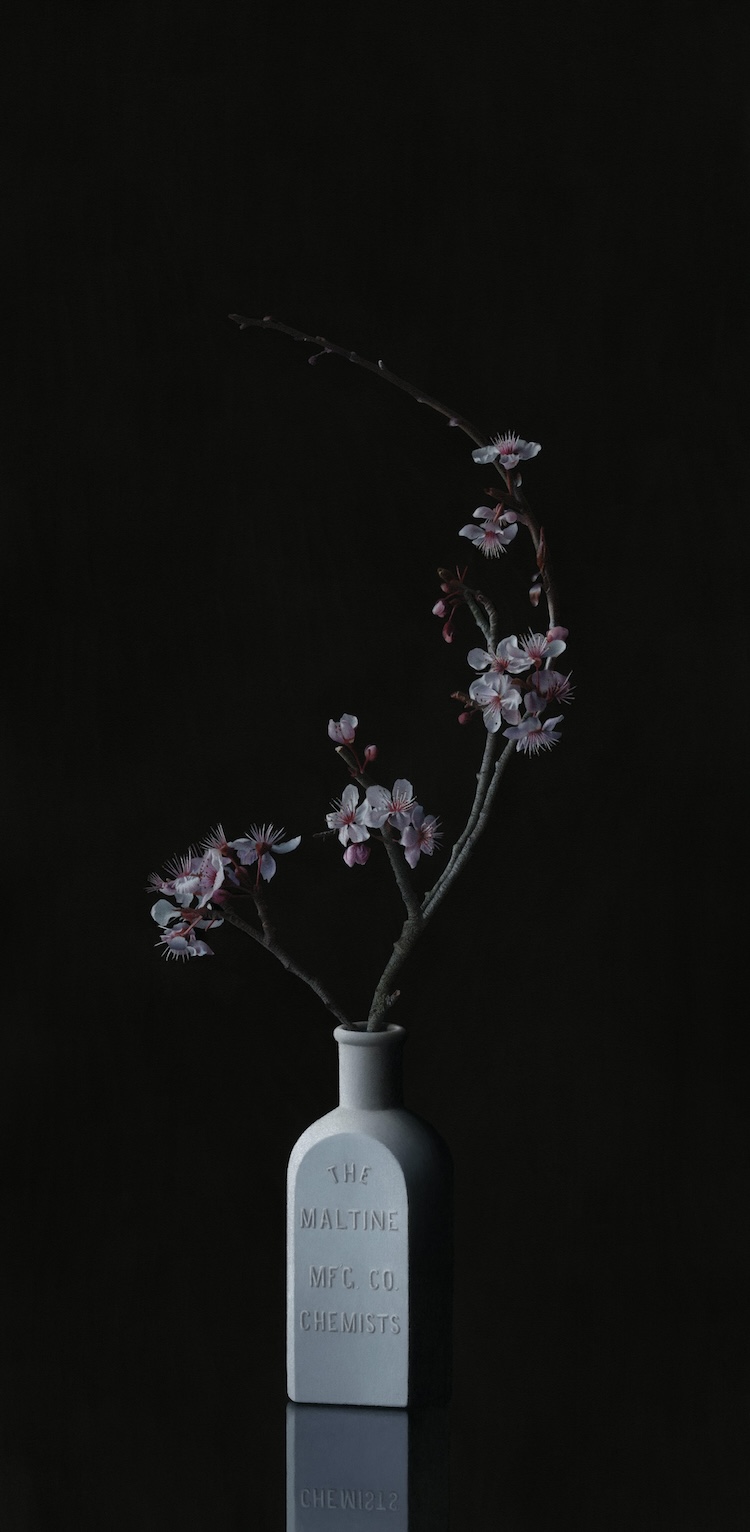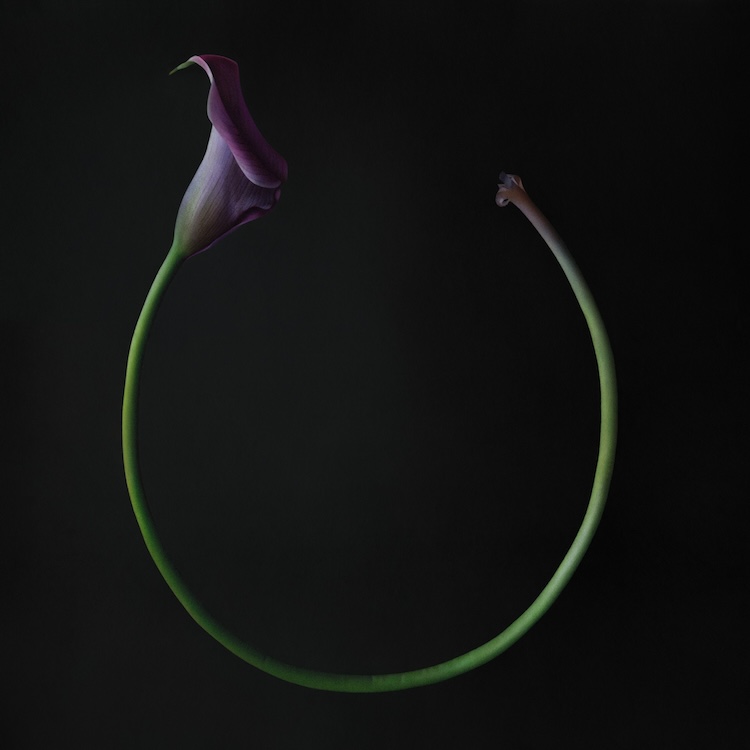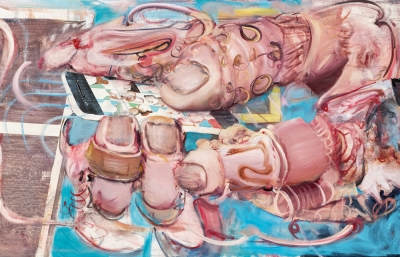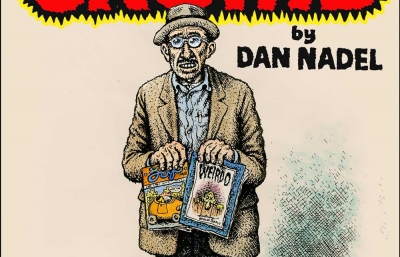The title of Megan Seiter’s remarkable debut exhibition at Meyer Gallery in Santa Fe, which closed at the end of 2023, encapsulated the essence of becoming. “Efflorescence,” denoting the process of a bud becoming a flower, was an apt title for Seiter’s first solo exhibition as she has been making highly refined wax-based colored pencil artwork, typically depicting an assortment of flowers, for nearly two decades. In this exhibition, Seiter conveys her emergence and transformation in both professional and personal aspects of her life; particularly her experience with motherhood. Thirteen colored pencil works, integrating watercolor and pastel medium, comprise the show. The grouping allowed her to create a thematic experience and sustained quality that showcased an ability to transform flowers into living compositions that teach us how to observe and feel things deeply.
Seiter transforms bare floral arrangements into dramatic compositions, exploring color combinations and subtle shading. Seiter’s unique still lifes excel because she both honestly conveys an accurate rendering and because she animates her subject; the canvas feels alive because of her handling of the nuanced degree of realism offered. Her gaze is paramount and delivers a truth about what is needed to capture naturalism; it isn’t a contest to see how much she can depict, but rather, the subtle determination of how much information has to be shared to evoke the emotional moment and verity of a given instance. Seiter wants to share the beauty she observes, replete with minute details, but isn’t competing with photography. She manages the intentional expression of truth in the rendering of what is seen, allowing the audience’s subtle awareness of the human hand, thus making the overture from artist to viewer intimate. The exhibition is as much about being a human being and all the corresponding truths which congeal to make a visual impact complete. Seiter conjured up something whose verisimilitude compels us to slow down and actually witness the beauty of what is present. The conveyance of information via still life, with artistically chosen gaps and restraint, presses her scrutiny at the very moment visual confrontation occurs and as our eyes process an array of information. In these drawings we get color and contour, and lighting and shading: all the things that make human perception distinctive, coupled with a respite from the hustle and bustle of modern life. Seiter is inviting us to stop and look closely, enriching our lives in the process.
The bold and vibrant colors Seiter had intended to rely on were incongruent with the flowers available to her. How they looked both in person, and in the reference photographs she took, simply didn’t speak to her, thus requiring some adjustment and suppleness on her part. To sharpen the color, she started using a black matte board behind the flower arrangements. What emerged as a result was surprising; the colors blossomed and sharpened in a visually enticing manner. Seiter saw correlation to her own life as a mother. Her son was emerging from a year of health-related challenges, which made Seiter sensitive to the workings of the engine of a living thing. In the process Seiter learned what it is to be human, how detail is both relevant and an obfuscation, as she found the aesthetic vision she was seeking; a result of how we shape our thoughts and experiences with our own participation. Essentially she learned to work with what we have and give thanks for the beauty that is present and which emerges if nurtured properly.
Seiter’s art practice tests observation. The organic material of her subject, and how light interacts with a living thing, is singular; as the bright quality of freshly cut flowers in the studio erodes quickly. Capturing and thereafter remembering the quality of luminosity she will communicate, culminates with the transference of both what she sees and its individual aura. An experienced draftsman, she relies on her cognition and memory, everything she has learned about the various components comprising a flower, and how color and light permeates throughout the viewing experience. The reference photos she utilizes are critical, but the difficulty of transferring something three-dimensional to two-dimensionality isn’t eliminated, as she works through the push and pull of materiality and cognizance. 
Seiter resists the technique of compressing a variety of light sources one encounters throughout the day into an amalgamation the viewer could mistake for realism. The enigmatic nature of light, how it bounces off a surface, and whether it communicates the particular element that incipiently lured her, presents the tension in her distinctive voice as an artist. It is a challenge that she welcomes. Thus, Seiter commits substantial effort to lighting experimentation. Taking source photographs throughout the day and even in different rooms; an appraisal of this ephemeral ingredient replete with shadows, all comprise her early approach which seeks an elusive truth.
Seiter’s process begins with a rudimentary sketch she transfers to frisket film; a clear acetate film that allows her to mask the surface of her composition where the primary composition will ultimately be drawn in colored pencil. Its low tack adhesive backing allows for temporary adhesion; it’s a common device used in airbrushing and stenciling. She thereafter applies pan pastel in the background. Pan pastels are soft pastels (a mixture of pigments, binders, and fillers) with a chalk or charcoal texture that comes in a pan form instead of a stick. They come in a wide range of concentrated colors and have a cake-like quality which can be blended. Seiter is able to mix and apply the pigment like paint, although it’s applied, in her case, with a sponge by rubbing the pigment onto the paper surface.
In instances where she has a gradient, Seiter can achieve a smooth variegation without working around the original drawing. She then peels off the frisket film and works the primary area of the drawing with colored pencil. Lightfastness is obtained as the use of pan pastel is resistant against light. They have high opacity and a rich, opaque color. The pan pastels offer a broad spectrum of hues; they allow Seiter to create smooth gradients and dramatic shadows in her backgrounds. And particularly with dark backgrounds, the values of the primary central color drawing resonates with heightened emphasis.
In addition to a pan pastel background, Seiter sometimes uses watercolor underneath the colored pencil portion of the composition. She works mostly with sanded pastel paper which is a fine grit sandpaper. Avoiding the laborious process of filling in all the grooves of the paper with the fine point of a colored pencil, Seiter occasionally uses a watercolor layer underneath the colored pencil. The resulting vibrancy with the colored pencil layer sitting atop the flat undercoat of watercolor also bumps up the central motif. The colored pencil is wax based, so Seiter utilizes pastel pencil for some of the white porcelain vases she also depicts. This allows the vases to fade away toward the darker parts of the vessel, without a surface distraction which the wax sheen can cause.
Many of the vases Seiter utilizes to stage flowers are in the shape of women’s bodies. She has sourced them from a wide variety of places: a taxidermy store, the flower market in San Francisco, online shops, and she discovered one during a trip to South Carolina. Curiously, Seiter thought she would be a figure artist while studying art in college; she loved portraiture. And although the vases don’t necessarily contain faces and human figures per se, she is giving each flower the individual attention which typically attends to portraiture. Imperfections and variability contribute to the composition. Seiter notes that each flower arrangement has an attitude; they can be sassy or sweet, for instance. Human figure vases also allow for an anthropomorphic quality which emphasizes the animate quality of plants, thus connecting us and triggering the expression of empathy.
Among the various terms that describe realism, Seiter prefers hyperrealism. But even within this context, there is a restraint imposed. Specifically, Seiter notes that a person’s visual field is only 10% in focus; the rest is peripherally vague. Unlike a photograph that might present the entire composition with striking articulation, Seiter resists painting all of the detail she can observe; otherwise the finished product might appear fully drawn at the expense of looking overly in focus and unreal. The human eye is not seeing what a photograph does; the camera lens simply doesn’t work the same way that the human eye does. As a result, Seiter smudges out some of the texture visible in the reference photographs. Also, she looks to where the light hits shadows, a place our eyes naturally want to go, and brightens texture and color there, with the purpose of making it replicate how the human eye would visualize it. In this way she is adapting a photo reference toward a human observatory. Seiter knows the counter-intuitive truth; that the picture will look more realistic without all of the detail. In effect, too much realism is a distraction to the viewer because of the limits of the human eye. What sets Seiter apart is not what she can do technically drawing the subject accurately; but rather, her skill at suppressing some detail to make the composition present as we would experience it in nature. Seiter seeks a communion with the complete picture not just detail and exactness for its own sake. 
Seiter references Eckhart Tolle when discussing the impression she wishes to evoke. In his book A New Earth (2004), Tolle writes: “When you recognize the sacredness, the beauty, the incredible stillness and dignity in which a flower or a tree exists, you add something to the flower or the tree. Through your recognition, your awareness, nature too comes to know itself. It comes to know its own beauty and sacredness through you.” Seiter’s work extols the virtues of being present and the resulting awareness of beauty in the most natural places. Like Tolle, she wants us to look closely and embrace the connectedness we can feel when we allow the natural object to transmit itself to us. Seiter wants to convey this sensibility and truth to the viewing of her paintings. She wants the picture to look real, but also compels the viewer to feel that they are eavesdropping on her experience closely looking within the stillness of nature. This method, one could call it a process of presence and immersion, maps out the human sensation of revelation.
Seiter’s work can be said to occupy the mysterious threshold, the liminal quality, between what is real and what is perceived. In transforming what is seen, she works the space of transition and amplifies the barely perceptible. In doing so, reality remains materially certain but takes on subtle luminosity and vibrancy in furtherance of connectedness. The pencil layers she applies with exacting detail result in subtle shifts in color values which unify the drawing. The experience for the viewer is delectable. —Matt Gonzalez
Megan Seiter’s next exhibition will be at Dolby Chadwick Gallery in San Francisco this December 2024.

